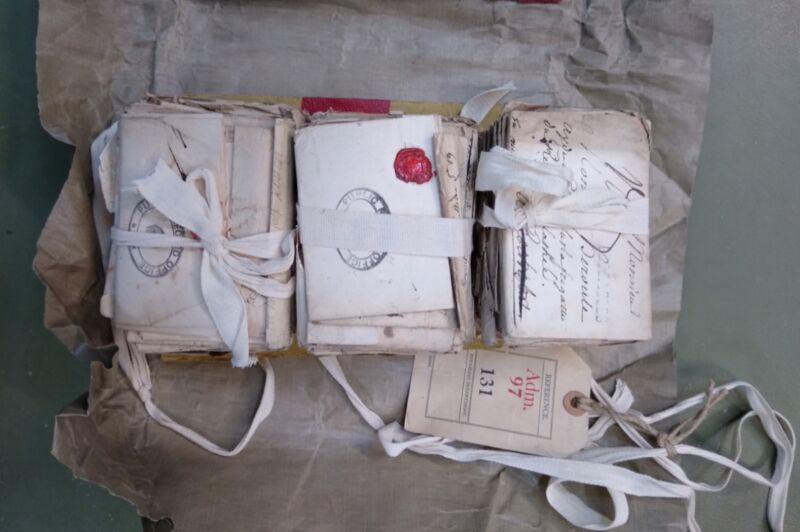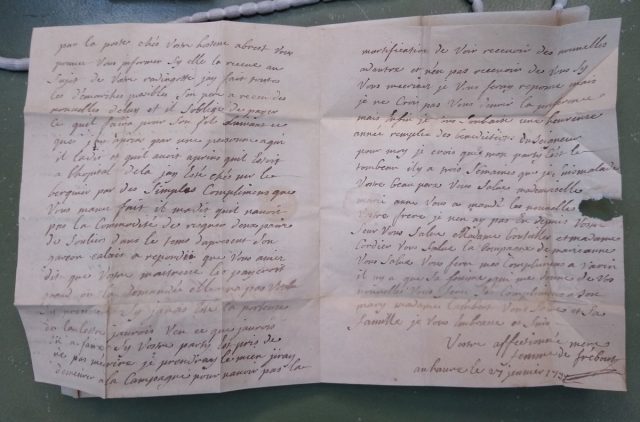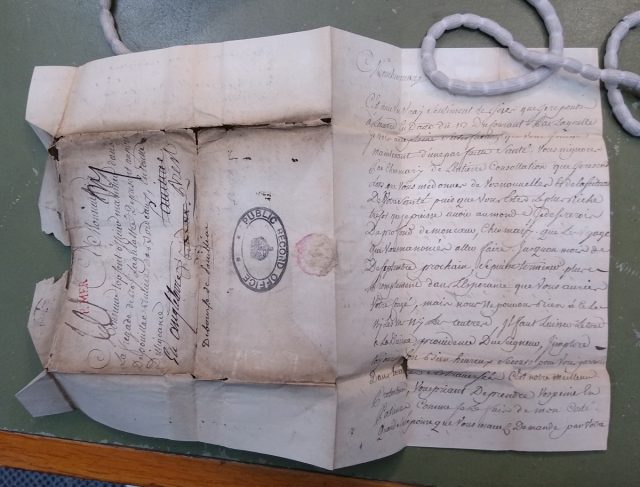
[ad_1]

The Nationwide Archives / Renaud Morieux
College of Cambridge historian Renaud Morieux was poring over supplies on the Nationwide Archives in Kew when he got here throughout a field holding three piles of sealed letters held collectively by ribbons. The archivist gave him permission to open the letters, all addressed to 18th century French sailors from their family members and seized by Nice Britain’s Royal Navy in the course of the Seven Years’ Battle (1756-1763).
“I spotted I used to be the primary individual to learn these very private messages since they’re written,” stated Morieux, who simply revealed his evaluation of the letters within the journal Annales Histoire Sciences Sociales. “These letters are about common human experiences, they’re not distinctive to France or the 18th century. They reveal how all of us address main life challenges. After we are separated from family members by occasions past our management just like the pandemic or wars, we’ve to work out learn how to keep in contact, learn how to reassure, look after individuals and maintain the eagerness alive. Right now we’ve Zoom and WhatsApp. Within the 18th century, individuals solely had letters, however what they wrote about feels very acquainted.”
England and France have an extended, difficult historical past of being at battle, most notably the Hundred Years’ Battle within the 14th and fifteenth centuries. The 2 international locations had been additionally virtually repeatedly at battle in the course of the 18th century, together with the Seven Years’ Battle, which was fought in Europe, the Americas, and Asia-Pacific as England and France tried to determine world dominance with assistance from their respective allies. The battle technically advanced out of the North American colonies when England tried to increase into territory the French had already claimed. (Enjoyable reality: A 22-year-old George Washington led a 1754 ambush on a French power on the Battle of Jumonville Glen.) However the battle quickly unfold past colonial borders, and the British went on to grab a whole lot of French ships at sea.

The Nationwide Archives / Renaud Morieux
Based on Morieux, regardless of its assortment of wonderful ships throughout this era, France was quick on skilled sailors, and the massive numbers imprisoned by the British—practically a 3rd of all French sailors in 1758—did not assist issues. Many sailors ultimately returned dwelling, though a couple of died throughout their imprisonment, often from malnutrition or sickness. It was no simple feat delivering correspondence from France to a continually transferring ship; usually a number of copies had been despatched to completely different ports in hopes of accelerating the chances of a letter reaching its meant recipient.
This explicit batch of letters was addressed to numerous crew members of a French warship known as the Galitee, which was captured by a British ship known as the Essex en route from Bordeaux to Quebec in 1758. Morieux’s genealogical analysis accounted for each member of the crew. Naturally, a number of the missives had been love letters from wives to their husbands, such because the one Marie Dubosc wrote to her husband, a ship’s lieutenant named Louis Chambrelan, in 1758, professing herself his “without end devoted spouse.” Morieux’s analysis confirmed that Marie died the next yr earlier than her husband was launched; Chambrelan remarried when he returned to France, having by no means acquired his late spouse’s missive.
Morieux learn a number of letters addressed to a younger sailor from Normandy named Nicolas Quesnel, from each his 61-year-old mom, Marguerite, and his fiancée, Marianne. Marguerite’s letters chided the younger man for writing extra usually to Marianne and to not her, laying the guilt thick. “I believe extra about you than you about me,” the mom wrote (or extra possible, dictated to a trusted scribe), including, “I believe I’m for the tomb, I’ve been unwell for 3 weeks.” (Translation: “Why do not you write to your poor sick mom earlier than I die?”)

The Nationwide Archives / Renaud Morieux
Apparently, Quesnel’s neglect of his mom brought on some stress with the fiancée since Marianne wrote three weeks later asking him to please write to his mother and take away the “black cloud” within the family. However then Marguerite merely complained that Quesnel made no point out of his stepfather in his letters dwelling, so the poor younger man actually could not win. Quesnel survived his imprisonment, per Morieux, and ended up engaged on a transatlantic slave ship.
For Morieux, studying the letters shed new mild on the lives of shipmen and their households, significantly the ladies. “These letters present individuals coping with challenges collectively,” he stated. “Right now we’d discover it very uncomfortable to jot down a letter to a fiancée understanding that moms, sisters, uncles, neighbors would learn it earlier than it was despatched, and lots of others would learn it upon receipt. It’s arduous to inform somebody what you actually take into consideration them with individuals peering over your shoulder. There was far much less of a divide between intimate and collective.”
Annales Histoire Sciences Sociales, 2023. DOI: 10.1017/ahss.2023.75 (About DOIs). (In French)
[ad_2]
Supply hyperlink